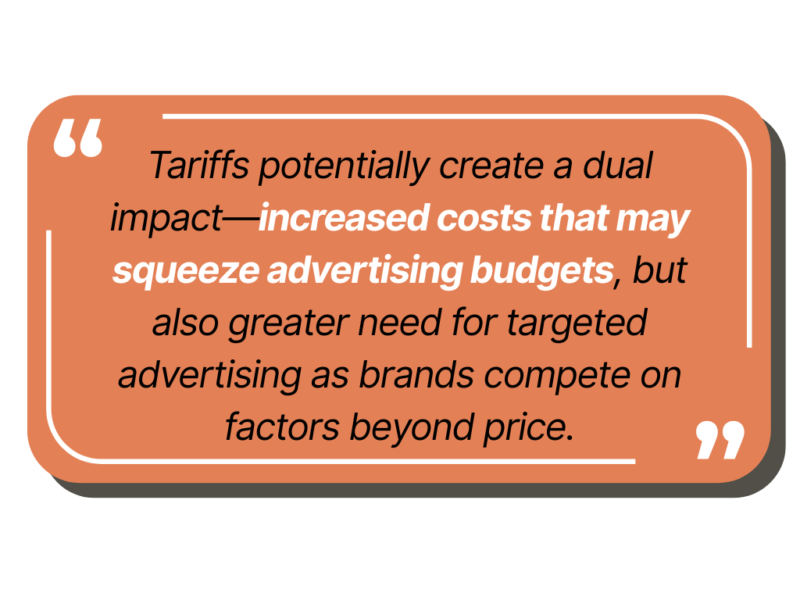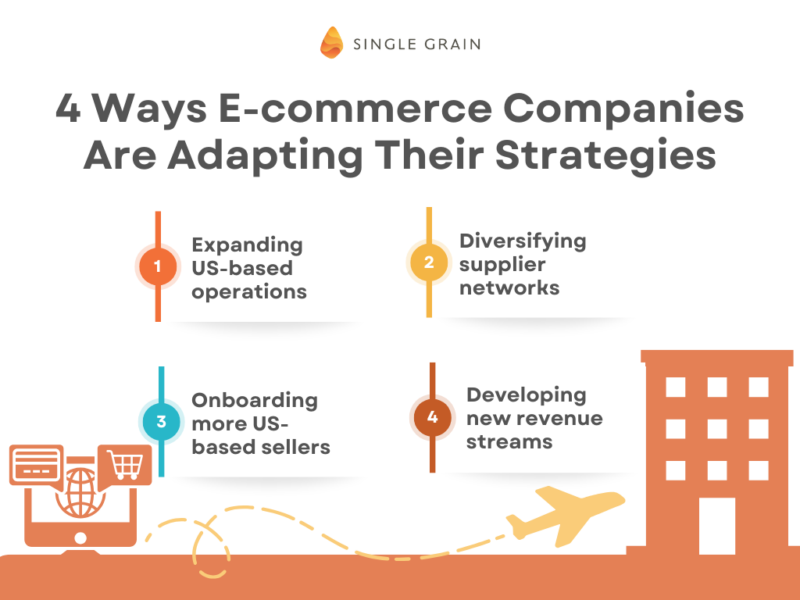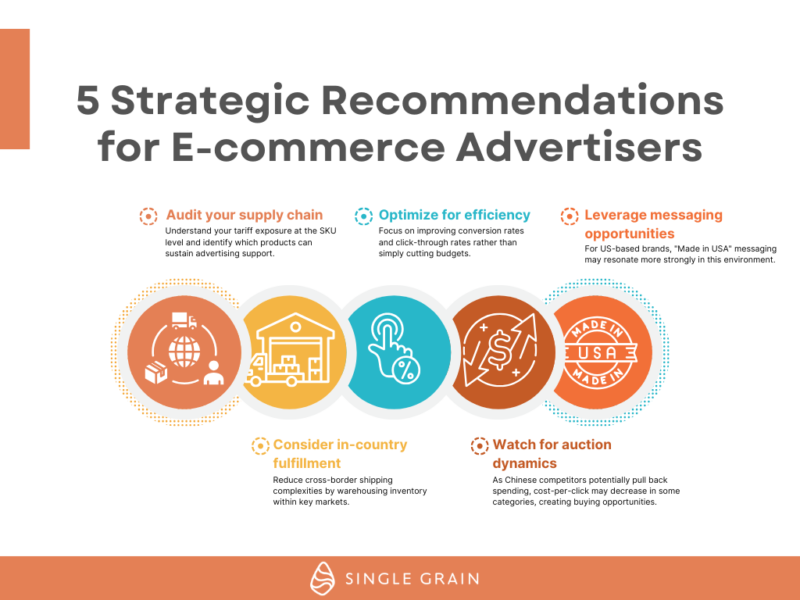What Ending the De Minimis Rule Means for E-commerce Ads
The e-commerce landscape is facing a seismic shift as the long-standing de minimis rule comes to an end for Chinese imports. This century-old trade provision has been the backbone of ultra-cheap direct-from-China shopping experiences, but its elimination is set to dramatically reshape not just how products are sold, but how they’re advertised. With billions in advertising dollars at stake and major platforms like Meta and Amazon heavily exposed to potential spending cuts, understanding these changes is crucial for digital marketers navigating the new reality.
Key Highlights
- Major Shift: The end of the de minimis rule for China (May 2025) will disrupt the $18+ billion Chinese advertisers spend on US platforms
- Budget Pressure: Chinese e-commerce giants like Temu and Shein face tough choices between absorbing costs or raising prices, with ad budgets likely first to be cut
- Platform Impact: Meta and Amazon most exposed to potential ad spending reductions with billions in revenue at stake
- Strategic Pivot: E-commerce companies already shifting to US warehousing, alternative markets, and efficiency-focused advertising
- Domestic Opportunity: US-based retailers may gain market share and increase ad spending, potentially offsetting some platform losses
TABLE OF CONTENTS:
Understanding the De Minimis Rule and Recent Changes
The de minimis exemption, established under Section 321 of the Tariff Act of 1930, has allowed packages valued below a certain threshold to enter the United States duty-free and with minimal customs processing. In 2016, this threshold was raised from $200 to $800, creating a perfect environment for the explosive growth of Chinese e-commerce platforms in the US market.
This seemingly arcane trade rule became the foundation for companies like Temu and Shein to offer incredibly low prices on everything from $5 dresses to $8 electronics. By shipping millions of low-value parcels directly to US consumers, these companies effectively bypassed tariffs that traditional retailers faced when importing in bulk.
However, this era is coming to an abrupt end. The Trump administration has announced that effective May 2, 2025, the de minimis exemption will be eliminated for all shipments from China and Hong Kong. Packages from these regions will now face either a 30% tariff or a $25 flat fee (increasing to $50 on June 1). Plans are also in place to eventually end the exemption for all countries once “adequate systems are in place.”
The E-commerce Advertising Landscape Before De Minimis Changes
The impact of these changes on digital advertising cannot be overstated. Chinese e-commerce companies have become major players in the US advertising ecosystem. For example, Meta reported $18.35 billion in revenue from Chinese advertisers in 2024 alone—a 34% year-over-year increase.
Amazon, while not explicitly breaking out revenue from Chinese advertisers, is even more exposed. The e-commerce giant generated $56.2 billion in total advertising revenue in 2024, with industry analysts estimating that Chinese sellers represent a significant portion of that figure. According to Marketplace Pulse, approximately 50% of the top sellers on Amazon’s US platform originate from China.
The scale of de minimis shipments underscores the potential disruption: US Customs and Border Protection reported 1.36 billion de minimis shipments entering the US in 2023, up from just 139 million in 2015. A US House committee found that Shein and Temu alone accounted for over 30% of these shipments.
Immediate Impact on Digital Advertising Budgets
The market has already begun reacting to these changes. Following the announcement, stocks of major Chinese e-commerce companies tumbled, with PDD Holdings (Temu’s parent company) falling 6% in after-hours trading, while Alibaba and JD.com saw declines of 5.1% and 4.7% respectively.
For these companies, the math is simple but painful: either absorb the new tariff costs and watch profit margins shrink, or pass costs on to consumers and risk losing the price advantage that fueled their growth. Either way, advertising budgets—often among the first discretionary expenses to be cut during financial pressure—will likely take a hit.
“Tariffs potentially create a dual impact—increased costs that may squeeze advertising budgets, but also greater need for targeted advertising as brands compete on factors beyond price,” explains Jonathan Gudai, CEO of Adomni, in a recent CNBC interview.

This dual pressure is driving a fundamental shift from growth-focused to efficiency-focused advertising strategies. E-commerce recruitment specialist Harry Joiner suggests brands should reserve ad inventory “for known winners and margin accretive products” while deprioritizing broad brand campaigns in the immediate term.
How E-commerce Companies Are Adapting Their Strategies

Chinese e-commerce giants aren’t waiting for the May deadline to adapt. Both Temu and Shein have been implementing strategic changes to mitigate the impact:
- Expanding US-based operations: Temu has been opening warehouses in the US to reduce reliance on direct shipping from China.
- Diversifying supplier networks: Shein has expanded production facilities to markets like Brazil and Turkey.
- Onboarding more US-based sellers: Both platforms are increasing the percentage of products sourced from US vendors.
- Developing new revenue streams: Temu is reportedly moving into the advertising business to buffer against tariff impacts.
These adaptations will reshape not just how these companies operate, but how they advertise. With margins under pressure, expect to see more targeted, performance-based campaigns focused on high-margin products rather than the broad awareness campaigns that characterized their initial US market entry.
Winners and Losers in the New Advertising Landscape
While Chinese e-commerce platforms face significant challenges, the end of de minimis creates opportunities for US-based retailers who have lost market share to these low-cost competitors.
“I think this is going to level the playing field a lot,” says Judah Bergman, founder and CEO of baby products brand Jool Baby, who sells on Amazon and competes directly with Chinese platforms.
For advertising platforms, the impact will be mixed. Meta and Amazon face the most significant exposure to potential spending cuts from Chinese advertisers. However, US-based retailers could offset some of these losses by increasing their advertising to capitalize on the opportunity.
The changes may also drive geographic shifts in advertising focus. Chinese e-commerce companies might redirect advertising dollars to other markets like Europe and Latin America to compensate for lost US sales. This could create new competitive dynamics in these regions as the advertising intensity increases.
Strategic Recommendations for E-commerce Advertisers

For marketers navigating this changing landscape, several strategic approaches can help maintain effectiveness:
- Audit your supply chain: Understand your tariff exposure at the SKU level and identify which products can sustain advertising support.
- Consider in-country fulfillment: Reduce cross-border shipping complexities by warehousing inventory within key markets.
- Optimize for efficiency: Focus on improving conversion rates and click-through rates rather than simply cutting budgets.
- Watch for auction dynamics: As Chinese competitors potentially pull back spending, cost-per-click may decrease in some categories, creating buying opportunities.
- Leverage messaging opportunities: For US-based brands, “Made in USA” messaging may resonate more strongly in this environment.
Looking Forward
The end of the de minimis exemption marks a turning point for cross-border e-commerce and the digital advertising ecosystem that supports it. While the immediate impact may create volatility, forward-thinking marketers can use this disruption as an opportunity to refine their approach.
For personalized advertising that maximizes ROI during these challenging transitions, tools like Karrot.ai can help your LinkedIn ads convert with 1-1 personalized messaging. By delivering individualized messages without sacrificing scale, Karrot helps you make every advertising dollar work harder—exactly what’s needed as the e-commerce advertising landscape evolves.
Brands that will thrive in this new environment view these changes not just as a challenge to overcome, but as an opportunity to become more strategic, data-driven, and customer-focused in their digital advertising approach.




